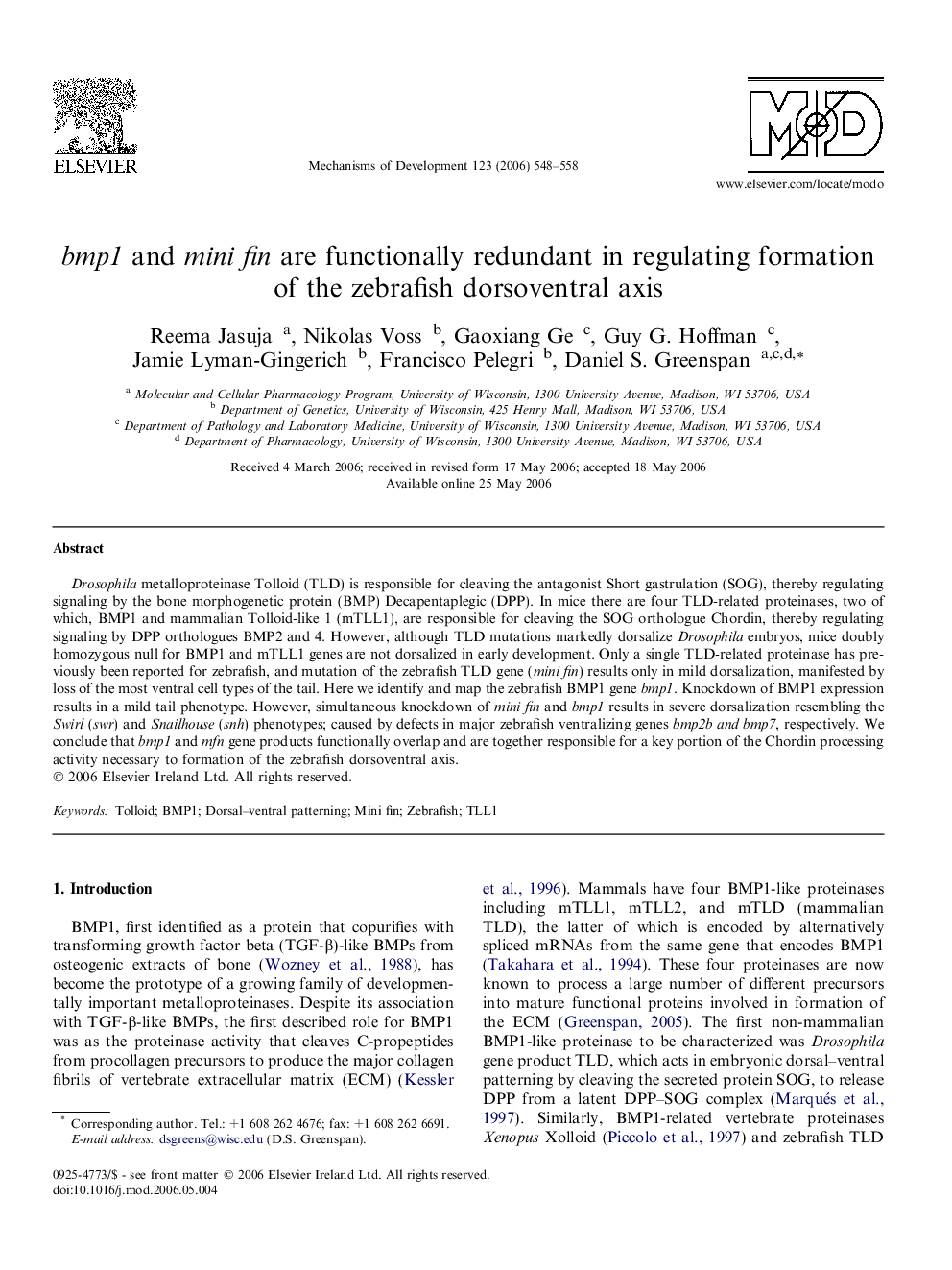| Article ID | Journal | Published Year | Pages | File Type |
|---|---|---|---|---|
| 2195146 | Mechanisms of Development | 2006 | 11 Pages |
Drosophila metalloproteinase Tolloid (TLD) is responsible for cleaving the antagonist Short gastrulation (SOG), thereby regulating signaling by the bone morphogenetic protein (BMP) Decapentaplegic (DPP). In mice there are four TLD-related proteinases, two of which, BMP1 and mammalian Tolloid-like 1 (mTLL1), are responsible for cleaving the SOG orthologue Chordin, thereby regulating signaling by DPP orthologues BMP2 and 4. However, although TLD mutations markedly dorsalize Drosophila embryos, mice doubly homozygous null for BMP1 and mTLL1 genes are not dorsalized in early development. Only a single TLD-related proteinase has previously been reported for zebrafish, and mutation of the zebrafish TLD gene (mini fin) results only in mild dorsalization, manifested by loss of the most ventral cell types of the tail. Here we identify and map the zebrafish BMP1 gene bmp1. Knockdown of BMP1 expression results in a mild tail phenotype. However, simultaneous knockdown of mini fin and bmp1 results in severe dorsalization resembling the Swirl (swr) and Snailhouse (snh) phenotypes; caused by defects in major zebrafish ventralizing genes bmp2b and bmp7, respectively. We conclude that bmp1 and mfn gene products functionally overlap and are together responsible for a key portion of the Chordin processing activity necessary to formation of the zebrafish dorsoventral axis.
